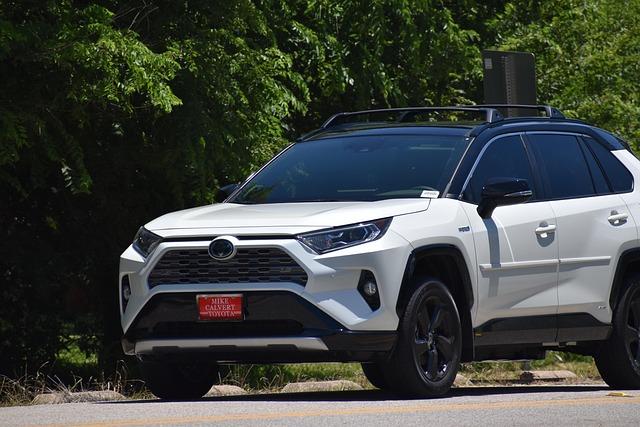In a world increasingly defined by its environmental challenges, the quest for sustainable driving solutions has never been more urgent. Hybrid technology stands at the forefront of this movement, blending innovation with practicality to reshape the way we think about transportation. By seamlessly combining electric power with traditional combustion engines, hybrids offer a bridge toward cleaner, more efficient journeys. This article explores how hybrid technology supports sustainable driving, examining its impact, benefits, and the role it plays in steering the future of mobility toward a greener horizon.
The Role of Hybrid Technology in Reducing Carbon Emissions
Hybrid technology acts as a pivotal bridge between traditional combustion engines and full electric vehicles, offering a significant reduction in carbon emissions without compromising on performance or convenience. By intelligently combining an internal combustion engine with an electric motor, hybrid vehicles optimize fuel consumption during stop-and-go city driving-a primary contributor to excessive greenhouse gases. This dual-power approach not only minimizes tailpipe pollutants but also slows down the rate at which fossil fuels are depleted, making each journey more eco-friendly.
Beyond the obvious fuel savings, hybrid systems contribute to sustainability through several innovative mechanisms:
- Regenerative Braking: Converts kinetic energy from braking into electricity, replenishing the battery and reducing waste.
- Automatic Engine Shutdown: Temporarily shuts off the engine at idle, preventing unnecessary emissions.
- Optimized Power Management: Seamlessly switches between electric and fuel power for maximum efficiency.
| Driving Condition | CO₂ Emission Reduction | Fuel Efficiency Gain |
|---|---|---|
| City Traffic | Up to 30% | 20-25% |
| Highway Driving | 10-15% | 15-18% |
| Stop-and-Go | 35-40% | 30-35% |
Innovative Features Driving Fuel Efficiency in Hybrid Vehicles
Hybrid vehicles integrate cutting-edge technology to maximize fuel economy without sacrificing performance. One of the standout features is the regenerative braking system, which captures and repurposes energy typically lost during braking, converting it into electricity that powers the battery. Additionally, electric motor assist works in tandem with the gasoline engine to optimize power delivery and reduce fuel consumption during acceleration and city driving. Together, these elements create a seamless driving experience that prioritizes energy conservation.
Another pivotal innovation lies in smart power management systems that constantly monitor driving conditions and automatically switch between electric, gas, or combined modes. These systems are enhanced by advanced aerodynamic designs and lightweight materials that reduce drag and overall vehicle weight, further improving mileage. Below is a quick comparison illustrating how these features contribute to efficiency:
| Feature | Fuel Efficiency Impact | Benefit |
|---|---|---|
| Regenerative Braking | Up to 15% energy recovery | Extends battery range |
| Electric Motor Assist | Reduces gas engine use | Smoother acceleration |
| Smart Power Management | Optimizes fuel mix | Improves overall mileage |
| Aerodynamic Design | Less drag at high speeds | Lower fuel consumption |
Practical Tips for Maximizing Sustainability with Hybrid Cars
To truly harness the environmental benefits of hybrid vehicles, focus on driving habits and maintenance routines that optimize fuel efficiency. Gentle acceleration and smooth braking can significantly reduce reliance on the gasoline engine, encouraging more frequent use of the electric motor. Additionally, utilizing regenerative braking by anticipating stops not only conserves energy but also extends brake life. Keep your tires properly inflated and schedule regular engine tune-ups to maintain peak performance-these small actions contribute to lowering emissions and stretching every mile driven.
Beyond driving techniques, smart planning can elevate sustainability efforts. Consider parking in shaded areas to minimize battery cooling demands, and pre-condition your vehicle while it’s still plugged in to reduce battery drain. For those with access to home charging, prioritizing off-peak electricity hours can lessen environmental impact by tapping into cleaner energy grids. The table below highlights simple yet effective habits and their impact on hybrid efficiency, making it easier to choose practices that boost your eco-friendly footprint.
| Tip | Impact on Efficiency |
|---|---|
| Gentle Acceleration | Improves fuel economy by 10-15% |
| Proper Tire Inflation | Reduces rolling resistance by 5% |
| Use Regenerative Braking | Reclaims up to 20% energy |
| Pre-condition Battery when Plugged In | Extends electric range by 8% |
| Charge during Off-Peak Hours | Supports cleaner energy use |
To Conclude
As the road toward a more sustainable future continues to unfold, hybrid technology stands at the crossroads of innovation and responsibility. By seamlessly blending efficiency with performance, hybrid vehicles not only reduce emissions but also reshape the way we think about driving itself. For readers seeking to embrace eco-conscious choices without compromising on practicality, the hybrid approach offers a compelling path forward. Ultimately, it’s not just about the destination-it’s about driving there with clarity, purpose, and care for the world we share.
